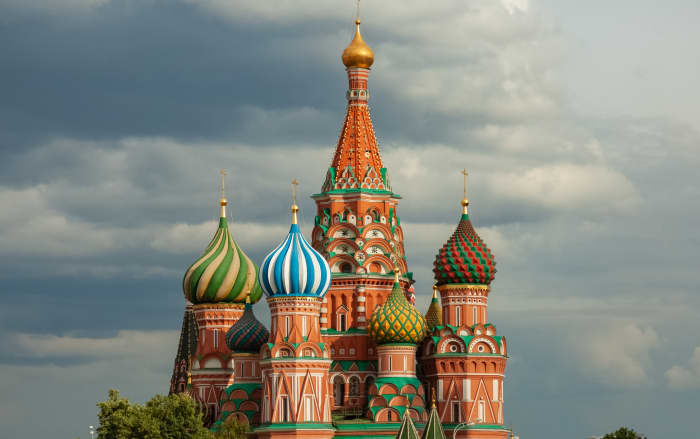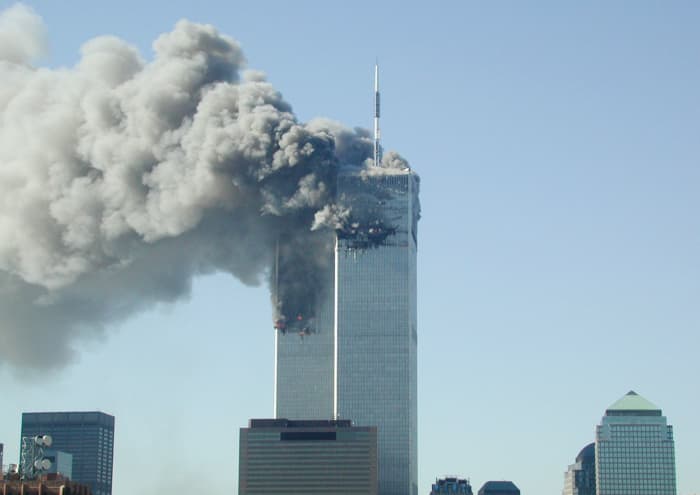This post was originally published on this site
On an October morning 25 years ago, MarketWatch started providing real-time news and market data to the general public on the internet. Individuals were fleeing their stockbrokers for new online platforms, like E-Trade and Charles Schwab, and hungry for financial data and information that did not cost upwards of $10,000 annually to access.
The MarketWatch newsroom was built with these readers’ needs in mind and for the next 25 years we provided them unbiased coverage to help them make sense of financial markets and their personal financial decisions.
As MarketWatch marks its 25th anniversary this week, we are looking back at the 25 biggest market events and developments that we have covered. These MarketWatch Moments shaped our current capital markets and will continue to reverberate.
In the early days, there were five market events and developments that were titanic in their scope and set the tone for what was to come.
1. Online brokers and the rise of the day trader

Getty Images/iStockphoto
The internet and the discount brokerage model combined in the late 1990s to unleash a powerful new force on financial markets that was led by E-trade and Charles Schwab
SCHW,
By 1998, million of Americans had moved their retail trading activities online, reshaping Wall Street forever. The internet also offered individual investors access to financial information, ranging from securities filings to market-moving news and data provided by emerging news organizations, like MarketWatch. CNBC’s market news became the default channel in waiting rooms and airport lounges and stock-market message boards were overrun with trading tips.
Online brokers promised low commissions and a vehicle for quick trading profits. E-Trade ads in the late 90s tapped into a fear of missing out on a boom. One ad during the Super Bowl featured a patient being wheeled into an emergency room, suffering from a condition diagnosed as “money out the wazoo.” An estimated 10 million people quit their jobs to become “day traders,” adding to the frenzy around internet and technology stocks.
Sometimes it felt like the Wild West and the abuses were real. But it was also clear that lower costs and easier access to information empowered individual investors to become active market participants, and would pressure Wall street to serve them better.
2. Russian ruble devaluation and LTCM

Getty Images/iStockphoto
Brains aren’t everything. Despite employing two future Nobel laureates, Long-Term Capital Management went belly up in late 1998, becoming a watchword for investor hubris and systemic risk. LTCM was a world beater, raising over $1 billion between 1994 and 1998 as its leaders touted their approach that they bragged employed leverage to take advantage of bond and interest-rate arbitrage opportunities while cutting risk.
But it all went awry in August 1998 as Russian markets imploded after Moscow devalued the ruble, defaulted on domestic debt and declared a moratorium on payments to foreign creditors. LTCM’s highly leveraged exposure to Russia resulted in the hedge fund’s collapse, with the Federal Reserve coordinating a then-historic $3.6 billion bailout led by the fund’s creditor banks.
Those woes are regularly invoked during periods of financial stress, as wary investors keep their eyes peeled for the next LTCM. Investor Michael Novogratz in June labeled turmoil in crypto markets the industry’s “Long-Term Capital Management moment.” The original incident was the first time MarketWatch covered excess Wall Street risk-taking that resulted in a government-led rescue. But MarketWatch’s coverage of “bailout culture” would continue.
3. The 1990s tech bubble, IPO boom & bust

Getty Images
MarketWatch didn’t just cover the dot-com boom and bust, it participated in the frenzy. The fledgling news site was one of many San Francisco-based companies that rushed to complete business plans with an eye toward immediate Wall Street riches. The initial public offerings of the era often didn’t depend on corporate financial performance, but instead were predicated on their ability to sell a new future.
Near the peak of the surge, MarketWatch went public in January 1999 at $17 a share, despite losing more than $8 million the previous year on less than $5 million in revenue. A valuation of roughly $200 million at the IPO price more than quintupled in just the first day of trading, making MarketWatch a billion-dollar company. Vincent Slavin, an institutional trader, was blunt when describing the MarketWatch IPO: “It’s complete lunacy.”
Other Wall Street analysts told Wired that MarketWatch was a “scrappy company” that unlike a newspaper “won’t have to contend with newsprint, delivery trucks, unions, and other messy expenses.”
All of this was part of what Federal Reserve Chairman Alan Greenspan described as “irrational exuberance.” Of course, the lunacy did not last. The bubble started to burst in April 2000 after a federal judge ruled that Bill Gates’ Microsoft
MSFT,
had violated antitrust law. The outsize valuations of the dot-com boom disappeared nearly in unison in the following months.
MarketWatch covered the implosion of companies like Pets.com and Webvan, even as its own stock price cratered, with MarketWatch shares dipping close to $1 in Sept. 2001. While many companies that had recently gone public went out of business, MarketWatch continued to find readers hungry for news about the markets, including dot-com bankruptcies and zombie stocks they left behind. In 2005, MarketWatch sold to Dow Jones for $18 a share, topping the original IPO price, and has survived long enough to cover the spiritual successors to those dot-com companies, such as Chewy
CHWY,
and DoorDash
DASH,
and to tell you why the second tech boom was nothing like the first.
4. Decimalization

AFP via Getty Images
Moving in response to a Nasdaq trading scandal, the Securities and Exchange Commission in 2001 forced U.S. exchanges to stop quoting stocks in ⅛ point fractions and move to decimals. In other words, quotes went from 12.5 cent increments to penny increments — a move that was seen as a boon to retail traders because it narrowed the spread between the bid and ask prices, but that also helped speed the development of electronic trading over the human touch.
Subsequent rule changes, culminating in what the SEC deemed the “National Market System,” had a similar effect, speeding technological trends that had been decades in the making while aiming to create a freewheeling market where exchanges and other venues, including electronic communications networks and so-called dark pools, would compete to provide best execution on trades.
A rise in high-frequency trading, or HFT — transactions conducted by powerful computers with high-speed connections to the various exchanges able to execute a large number of transactions in milliseconds or faster — was tied to market fragmentation. HFT firms were well equipped, for example, to take advantage of situations where a stock was trading at different prices on different venues. Critics charged that HFT distorted prices and encouraged market makers to vanish during periods of market stress.
The increased competition also contributed to the growth of a practice known as payment for order flow, in which brokers get paid by trading venues in return for routing their trades to them. Proponents argue that order-flow payments promote liquidity on Wall Street and facilitate zero-commission trading — to the advantage of retail traders. Detractors say it is a blatant conflict of interest and undermines the concept of fair markets. The backlash over the controversial practices has spurred fresh regulatory scrutiny, as well as an entrepreneurial response. IEX Group Inc., featured in Michael Lewis’s 2014 book “Flash Boys,” developed a trading platform with a speed bump aimed at discouraging high-frequency traders while shunning the practice of paying for order flow.
5. The 9/11 attacks

Getty Images
“Our primary concern here is for human life, but do we know whether any markets operating in that area have decided to suspend trading for today?” CNBC host Mark Haines asked shortly after the second plane hit the World Trade Center.
The human tragedy of 9/11 was overwhelming and the terrorist attack on the World Trade Center and Pentagon also clearly targeted financial markets and the people who worked to keep them functioning. U.S. markets did halt trading on 9/11 and the New York Stock Exchange would stay closed for four trading days, the longest period it had sat empty since 1933, during the height of the Great Depression.
But in the hours before those decisions were made and before Americans began to understand the true impact of 9/11, traders and other workers who would normally be commuting to or arriving on Wall Street, and their families, searched for information. News outlets, including ours, worked to provide them with whatever insight they could.
Dressed in a reddish brown pantsuit and pearls, Maria Bartiromo stood on the floor of the New York Stock Exchange as traders milled about and described what she had seen just moments before. “The first explosion that I witnessed was the second plane going into the second tower,” she told the CNBC hosts. “I was outside, frankly I ran for my life.”
As the day progressed, many websites buckled under the pressure of increased internet activity. But MarketWatch managed to stay online, and pulled ads from the site. A reader named C. Harrison, who said he didn’t have access to TV or radio at work, wrote to us in the aftermath, saying that the site “provided me and my coworkers with the only news of what was going on in the world.” Harrison added: “You will never know how much I appreciated being able to maintain the link throughout the day and get updated information, almost as it was happening.”

